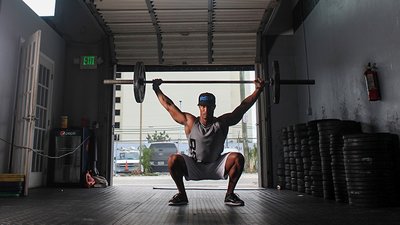There are a million folks out there peddling their personal workouts online, which makes for a good business if you've got a nice body, Photoshop, and an Instagram account. You may think you have to fork over a few bucks to get the inside scoop on the keys to muscle building, and that would be true—if you contacted an online trainer. But not here.
The best programs have a few important concepts in common—and those science-based recommendations do not change even if you consult a high-end celebrity trainer. So let's review what's been shown to work without opening up your wallet. Your time is better spent understanding how to put each of these ideas into practice.
We've identified the six most important training variables and practices, the ones critical for muscle growth. Firmly ingrain these key concepts, because they'll be the foundation of every muscle-building workout you do from here on.
1. Maintain A Caloric Surplus With Clean, High-Protein Foods
To lose weight, you simply have to eat fewer calories than you burn. Likewise, to gain weight you have to reverse the equation. There are no other shortcuts, alternate solutions, or gimmicks that'll get you there if you violate this first point, even if you closely follow the other five. You might as well write this one in stone.
Exercising increases caloric expenditure, so you'll need to bump up your daily intake. That's why estimating both what you take in and burn is helpful to ensure you're close to the mark. One place to start is to use an online fitness calculator that estimates total daily energy expenditure (TDEE). Simply plug in a few pieces of basic information about your size, exercise habits, goals (input "Muscle Gainz" as your goal), and activity level, which then estimates your daily recommended number of calories and macros.
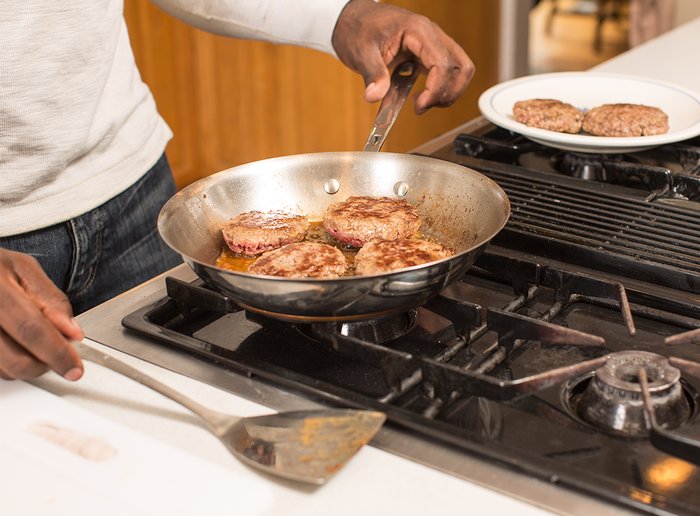
Making gains starts in the kitchen; you have to eat more calories than you burn.
Because the numbers derived are all estimates, you'll want to monitor your results over the next 7-10 days by weighing yourself on 3-4 separate occasions. "Your goal is to gain 0.5-1.0 percent of your body weight per week," says Paul Salter, MS, RD, Bodybuilding.com's nutrition editor. This amounts to 1-2 pounds per week for a 200-pound individual. Gaining weight any faster than this significantly increases your risk of putting on a substantial amount of body fat. If you're not gaining weight, or gaining too fast, you'll want to fine-tune your daily caloric intake to ensure you're in a slight daily surplus.
Protein intake is particularly important when putting on size, says law-enforcement fitness coordinator and officer Curtis Bartlett, a fitness athlete with RSP. "I try to keep my intake up by taking in protein throughout the day, supplementing with shakes between meals or when traveling."
2. Always Build Your Routine Around Multijoint Movements
The best routines have one important element in common: They're composed of multijoint movements. These kinds of exercises are the ones in which movement takes place in more than a single set of joints (the elbows and shoulders when bench pressing, for example). When more than one set of joints are working in unison, you can lift significantly more weight. With single-joint movements like leg extensions or cable cross-overs, you can't use nearly as much weight.
Pushing heavier loads ultimately has a huge impact on hormone response—more than any other single factor. Higher levels of both growth hormone and testosterone have been measured following large multijoint exercises compared to movements that recruit a smaller amount of muscle mass.
Build your workouts around exercises like bench presses, squats, deadlifts, overhead presses, and rows, "Do them at the beginning of your training because that's when your energy levels are highest," recommends personal trainer and RSP Nutrition athlete Jorge "Chico" Bianchi. "You'll be better able to push the heavier loads for a superior strength-building stimulus."
3. Know The Most Important Training Variables For Muscle Growth
Knowing the right multijoint exercises to include in your workout is a good start, but to optimize hypertrophy, there are other variables to consider. Here's a quick summary provided by Bodybuilding.com science editor Krissy Kendall, PhD, CSCS:
Intensity
Training intensity isn't about how "hard" you work out; it relates to the weight you're lifting as compared to your single-rep max for that movement. Converting that percentage to number of reps, exercise scientists have determined that for gaining maximum muscle, you want to choose a weight at which you can do 6-12 reps with good form, reaching muscle failure within that target range. If a weight's too easy or too heavy, adjust it accordingly on your next set.
Within that range, there are some ways to manipulate your training to instigate more than a single mechanism for muscle growth. "To build muscle, I like to start with a 6-8-rep range, then do a dropset by quickly reducing weight by about 50 percent and reaching a second point of muscle failure," says personal-training coach and RSP spokesperson Kieon Dorsey. "I get the best of both worlds, taking in the strength stimulus of a heavy set, and then with the muscles already fatigued, training for a superior muscle pump with the dropset. I'll do this for 4-5 sets."
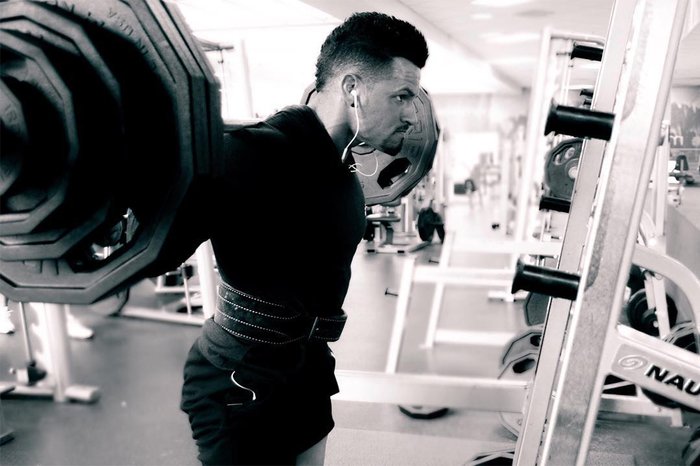
To build muscle, Jorge Bianchi chooses loads between his 6-12RM.
Volume
Higher-volume, multiple-set protocols have consistently been shown to be superior over single sets when it comes to building muscle, namely due to their ability to elevate testosterone levels. That often requires to you to follow a split routine in which you can do more total sets for each body part than following a whole-body routine in which less volume is done for each muscle group.
Training To Failure
Training to failure means completing reps to a point at which you can't complete any more on your own with good form. This technique has been shown to create a greater anabolic stimulus than training below this threshold.
Rest Periods
This between-set variable would seem to have little effect on growth, but moderate rest intervals—about 60-90 seconds between sets—maximizes the hypertrophic response. Resting too long has actually been shown to be counterproductive to muscle gains because it reduces overall accumulated metabolic stress, a marker of hypertrophy.

4. Train The Target Muscle At Different Angles
Since a high-volume protocol stimulates greater muscle growth (high is relative of course, because you can do too much), it's important to add exercises that work the muscle differently than moves you're already doing.
For example, if you do a bench press on a flat bench, followed by dumbbell presses on a flat bench, you work the pecs from nearly identical angles. Better choices to include in your workout would be incline or decline presses.
Likewise, on biceps day, doing standing barbell curls followed by standing dumbbell curls nearly repeats the same biomechanical motion. Preacher curls, however, emphasize the short head to a greater degree, while incline-bench curls focus on the long head. Even supinating your wrists by turning your palms up from a neutral-grip start position adds some degree of variety.
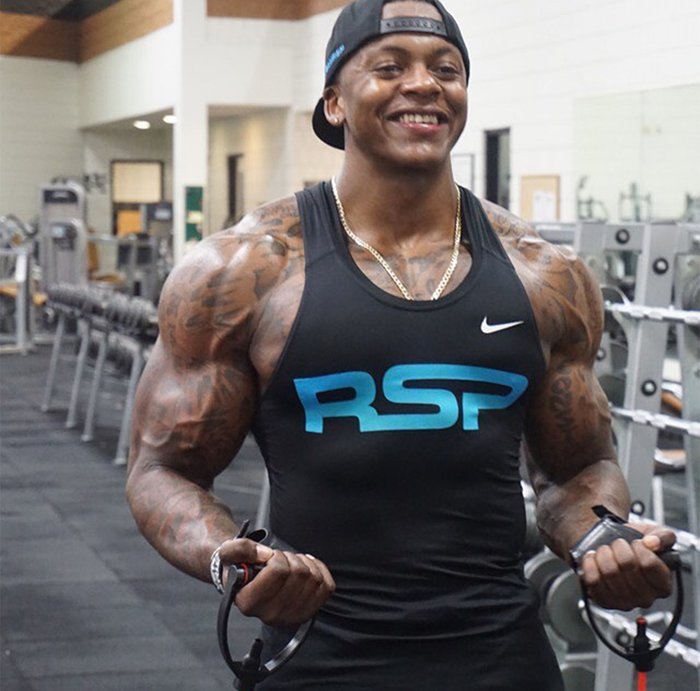
Working the biceps from all angles means including preacher and incline-bench curls in additional to ones in which your elbows are by your sides.
"Taking a multiangle approach to your training is essential to not only maintain a balanced physique but also build maximal size," adds Bartlett. "A simple adjustment like changing your grip, bench angle, or stance will make significant changes to how muscles are recruited during a lift, and therefore affect overall growth."
5. Challenge Yourself In The Gym
For the first few months of training, you probably noticed quite a bit of progress as the novelty of training created significant gains. Over time, however, your muscles will stop responding to the same workouts.
Here's where many lifters start to lose their way. That program that led to those initial gains begins to become less effective, because the body adapts fairly quickly to the stimulus placed upon it. The fact is, you need to keep increasing the degree of overload to keep seeing continual improvements. Often, that means increasing the weight as you get stronger, but it can also mean manipulating other training variables like reps and rest periods.
Progressive overload, then, means continually challenging your body to new levels of performance as it adapts to previous marks you set before it. You never want to get comfortable with a workout or stop pushing yourself. Recording your workouts in a log book will help remind you of what you can already do, so you can set higher marks.
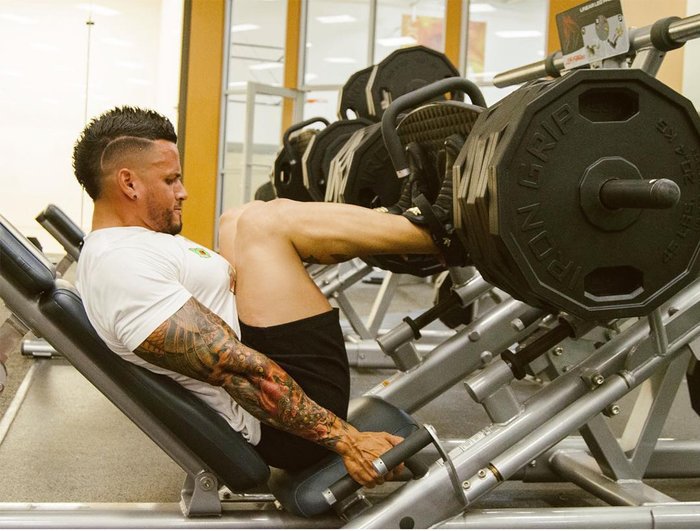
Two ways to incorporate progressive overload are to push more weight on given exercises, or do more reps.
"In my experience, people seem to be afraid of challenging themselves," adds Bianchi. "But to make changes to your body, you can't ever be satisfied. Another way is to 'shock' the muscles in new ways by making significant changes in your training. Never stay in a comfort zone."
6. Look For Ways To Gain A Training Edge
Recruiting a training partner is a great way to improve your workouts. They'll ensure you don't miss workouts, spot you, push you to do a few extra reps, and otherwise elevate your training to an intensity you likely couldn't achieve on your own. Make sure your partner shares your goals and training schedule.
"Having a training partner is almost like a relationship, because that person can make or break your gains," says Dorsey. "I suggest finding someone who is a bit stronger than you, who can push you harder than you currently do yourself. If your partner doesn't have the motor you have, they may instead be pulling you back."
Proper supplementation can also provide an edge. Research supports the benefits of whey protein, creatine, and even caffeine, among others, that can give you a significant and substantial performance boost.
Always be a student of the sport, and never stop learning. Not every technique or diet works for you the same as it did for your buddy. Embrace novel training concepts that make sense with the idea of self-experimentation. Reading and researching options will open up new avenues you may have never considered. Just keep your mind open to new ideas.

